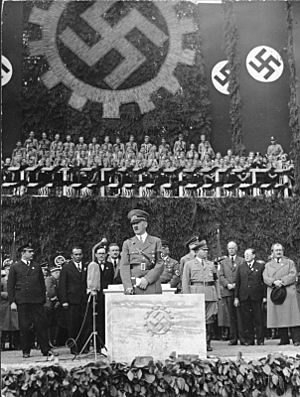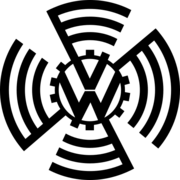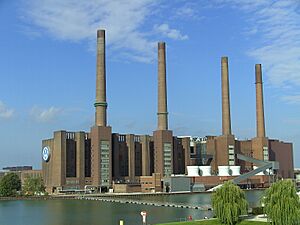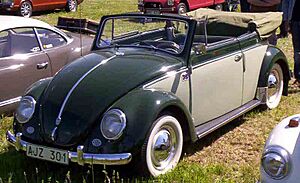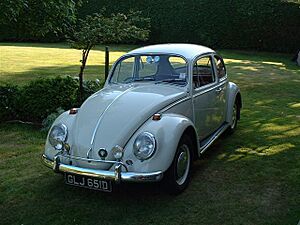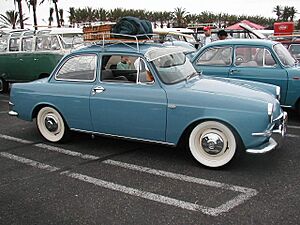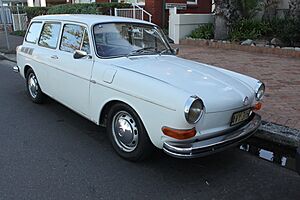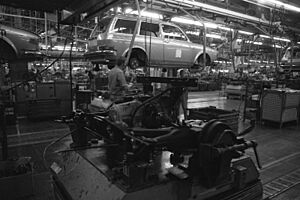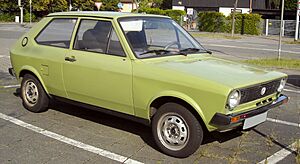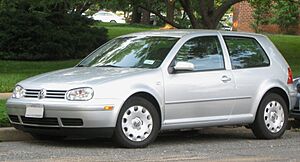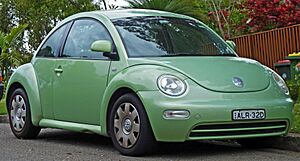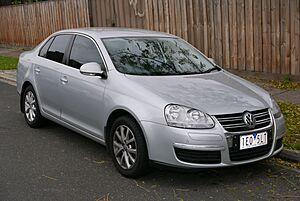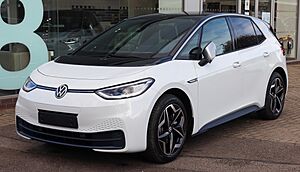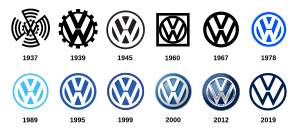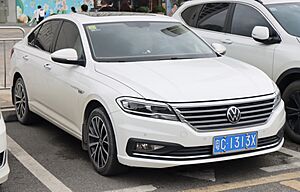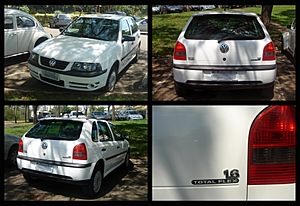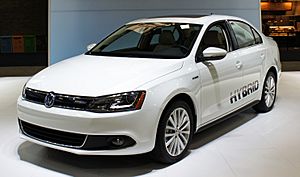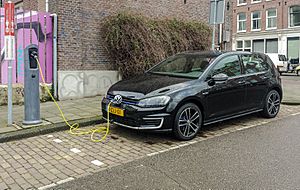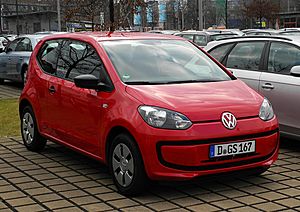Volkswagen facts for kids
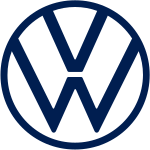 |
|
| Division | |
| Industry | Automotive |
| Founded | 28 May 1937 |
| Founder | German Labour Front |
| Headquarters |
,
Germany
|
|
Area served
|
Worldwide |
|
Key people
|
Thomas Schäfer (CEO, Volkswagen Passenger Cars) |
| Parent | Volkswagen Group |
Volkswagen (VW) is a famous German car maker. It is based in Wolfsburg, Germany. The company started in 1937. After World War II, a British Army officer named Ivan Hirst helped it become the big global brand it is today. Volkswagen is very well known for its classic car, the Beetle. It is the main brand of the Volkswagen Group, which was the world's largest car maker in 2016 and 2017.
The biggest market for Volkswagen is China. About 40% of its sales and profits come from there. The name Volkswagen means "people's car" in German.
Contents
- History of Volkswagen Cars
- The "People's Car" Idea (1932–1944)
- Wartime Production (1939–1943)
- British Help After the War (1945–1948)
- Becoming a Symbol of West Germany (1948–1961)
- From Beetle to Golf (1961–1973)
- More Car Models (1974–1990)
- The 1990s: New Designs (1991–1999)
- Growing Bigger (2000–2016)
- Focus on Electric Vehicles (2017–Present)
- How Volkswagen Operates
- Volkswagen Car Models
- Awards for Volkswagen
- Volkswagen in Motorsport
- Literature
- Football
- See also
History of Volkswagen Cars
The "People's Car" Idea (1932–1944)
Volkswagen was created in 1937 by the German Labour Front. This was part of a program called "Strength Through Joy." In the early 1930s, cars were very expensive. Most Germans could only afford a motorcycle. Only about 1 in 50 Germans owned a car.
Some car makers started working on "people's car" projects. These included Mercedes, BMW, and others. A designer named Ferdinand Porsche had been trying for years to get a car company interested in a small family car. In 1933, he built a car called the "Volksauto." It had an air-cooled engine in the back. It also had a rounded, "beetle" shape for good airflow.
In 1934, Adolf Hitler wanted a basic car that could carry two adults and three children. It needed to go 100 km/h (62 mph). He wanted a car that every German family could afford. This "People's Car" was supposed to cost about the same as a small motorcycle.
It became clear that private companies could not build such a cheap car. So, Hitler decided to support a new, state-owned factory. It would use Ferdinand Porsche's design. Many people paid into a savings plan to get a car. However, because of World War II starting in 1939, none of these people ever received a car.
Prototypes of the car, called the KdF-Wagen, appeared from 1938. The car already had its unique round shape. It also had an air-cooled engine in the back. The VW car was part of many "Strength Through Joy" programs. These programs included things like tours and outings. The word Volks ("People's") was used for other products too, like the "People's radio."
The company was first called Gezuvor in 1937. It was later renamed Volkswagenwerk GmbH in 1938.
Erwin Komenda, a chief designer, helped create the car's body. It looked like the Volkswagen Beetle we know today. It was one of the first cars designed using a wind tunnel. This method was used for German aircraft design. The car designs were tested for a million miles before they were ready.
The new factory started being built in May 1938. It was in a new town called "Stadt des KdF-Wagens." This town was later renamed Wolfsburg after the war. The factory had only made a few cars when the war began in 1939.
Wartime Production (1939–1943)
During the war, Volkswagen switched to making military vehicles. These included the Type 82 Kübelwagen (a utility vehicle) and the Volkswagen Schwimmwagen (an amphibious car). Like many factories in Germany during the war, the Volkswagen plant used forced labor. The company later admitted in 1998 that it used 15,000 forced laborers during the war.
British Help After the War (1945–1948)
In April 1945, the factory was taken over by American forces. Then it was given to the British. A British Army officer, Major Ivan Hirst, took control of the factory. At first, there was a plan to take the factory apart and send it to Britain.
One of the wartime cars was found at the factory. Major Hirst had it repainted green. He showed it to the British Army. In September 1945, the British Army ordered 20,000 cars. Production was difficult because the factory was damaged. Also, some parts were missing. Hirst and his German assistant, Heinrich Nordhoff, helped get production going again. The first cars went to the British forces and the postal service.
By 1946, the factory was making 1,000 cars a month. But it was still damaged. Production had to stop when it rained. The company even traded new cars for steel to make more cars.
The car and the town were renamed "Volkswagen" and "Wolfsburg". The factory was offered to car companies from America, Australia, Britain, and France. But they all said no. For example, William Edward Rootes, head of the British Rootes Group, said the car was "unattractive" and "too ugly and too noisy." In 1948, the British offered the Volkswagen company to Ford for free. But Ford also turned down the offer. This left Volkswagen to rebuild itself under Nordhoff's leadership.
Becoming a Symbol of West Germany (1948–1961)
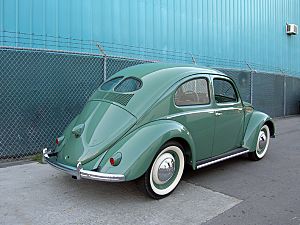

From 1948, Volkswagen became a very important part of West Germany's recovery. Heinrich Nordhoff became the head of the factory in 1948. In 1949, Major Hirst left. The company became a trust controlled by the West German government. The "Beetle" sedan, or "people's car," is known as the Type 1. Nordhoff kept making mostly this one model until he passed away in 1968. Other models like the Volkswagen Type 2 van and the Volkswagen Karmann Ghia sports car were also introduced.
Volkswagens were first sold in the United States in 1949. Only two cars were sold that first year. Volkswagen of America was created in 1955 to help with sales and service in the US. Production of the Beetle grew a lot. One million Beetles were made by 1955.
In 1959, VW started making cars at a plant near São Paulo, Brazil. In 2015, former employees in Brazil said the company had been silent about the persecution of its workers during the military dictatorship in the 1970s. Volkswagen later started an expert review of the situation.
On August 22, 1960, the company changed its name to Volkswagenwerk AG. Sales went up a lot in the 1960s. This was partly thanks to famous advertisements from New York. These ads used clever words and simple designs. They attracted younger buyers. Even though everyone called it the Beetle, the company never officially used that name. They called it the Type 1.
The Beetle was becoming old-fashioned. But in the 1960s and early 1970s, sales in America, smart advertising, and its reputation for being reliable helped it sell more than the Ford Model T. On February 17, 1972, the 15,007,034th Beetle was sold. Volkswagen now held the world record for the most cars of a single model ever made. By 1973, over 16 million Beetles had been produced.
To celebrate breaking the Ford Model T's record, Volkswagen made a special limited-edition Beetle. It was called the "Baja Champion SE" in the US. It had unique blue paint and special wheels.
From Beetle to Golf (1961–1973)
The 1961 Type 1 Beetle had a 36 horsepower engine. By 1970, it had a 1600cc engine. Air-cooled engines became less popular in the United States. This was because of new rules for unleaded gasoline and air pollution. Volkswagen moved its production equipment to Mexico, where car emissions were not as strictly controlled. Beetles were popular on the US West Coast as beach buggies.
VW added more cars in 1961 with the Type 3 models. These included the Karmann Ghia, Notchback, Fastback, and Variant. In 1969, the larger Type 4 models were introduced. These cars were very different. They had a single-piece body, an automatic transmission option, and electronic fuel injection.
In 1964, Volkswagen bought Auto Union. In 1969, it bought NSU Motorenwerke AG (NSU). Auto Union owned the old Audi brand. VW combined Auto Union and NSU to create the modern Audi company. This was a very important moment for Volkswagen. These companies had the technology VW needed when demand for its air-cooled cars started to drop.
Volkswagen added a "Super Beetle" (the Type 131) in 1971. It had a different front suspension. The front of the car was stretched a bit. This gave more space for luggage.
In 1973, Volkswagen introduced the Type 181. It was called the "Thing" in America. This car looked like the wartime Type 82. The military version was made for the German Army from 1970 to 1979.
By late 1972, Volkswagen decided to stop a project for a mid-engined car to replace the Beetle. Instead, they focused on cars with front-wheel drive and water-cooled engines. Volkswagen was in serious trouble by 1973. Sales of the Beetle were falling fast. VW knew that Beetle production had to end.
VW's ownership of Audi helped a lot. Audi's knowledge of front-wheel drive and water-cooled engines helped Volkswagen create new cars. These new cars included the Passat, Scirocco, Golf, and Polo.
The first new car was the Volkswagen Passat in 1973. It was a fastback version of the Audi 80. It shared many parts with the Audi.
In spring 1974, the Scirocco coupe came out. It was designed by Giorgetto Giugiaro. It was built on the same platform as the Golf.

The most important new model was the Volkswagen Golf in 1974. In the US and Canada, it was called the Rabbit for its first generation. Its sharp, angular style was designed by Giorgetto Giugiaro. The Golf had a water-cooled engine in the front, driving the front wheels. It also had a hatchback design. This design has been very popular ever since. Beetle production at Wolfsburg ended when the Golf was introduced. Beetle production continued in Brazil and Mexico.
In 1975, the Volkswagen Polo was introduced. It was a smaller car. The Polo became the basis for the Volkswagen Derby in 1977. These new cars helped Volkswagen turn its business around.
More Car Models (1974–1990)
The Golf has been the main car in Volkswagen's lineup since it was introduced. It has also been the basis for several other cars. There have been eight generations of the Volkswagen Golf. The first one was made from 1974 to 1983. Its design also led to the Volkswagen Scirocco sport coupe, Volkswagen Jetta sedan, Golf convertible, and Volkswagen Caddy pick-up.
In the 1980s, Volkswagen's sales in the United States and Canada went down. But the Golf was successful elsewhere. The new Golf, GTI, and Jetta models helped Volkswagen in North America for a short time. In 1985, Motor Trend magazine named the GTI its Car of the Year. Volkswagen's American sales went up in 1985 and 1986. But then they started to fall again. The factory in Pennsylvania closed in 1988.
Volkswagen bought a majority share of the Spanish car maker SEAT by 1986. VW bought SEAT completely in 1990. On July 4, 1985, Volkswagenwerk AG was renamed Volkswagen AG.
Volkswagen entered the small car market in 1975 with the Volkswagen Polo. It was a stylish and roomy three-door hatchback. It sold very well in Europe.
In 1981, the second-generation Polo was launched. In 1983, a Coupe and a Classic (a 2-door sedan) were added. The Polo sold even better than the first version. It was replaced by a new version in 1994. Also in 1981, the second generations of the larger Passat and the Scirocco coupe were launched.
In 1983, the MK2 Golf was launched. In early 1988, the third-generation Passat was released. Volkswagen also launched the Corrado, a sports car.
The 1990s: New Designs (1991–1999)
In 1991, Volkswagen launched the third-generation Golf. It was named European Car of the Year for 1992. The Golf Mk3 and Jetta Mk3 arrived in North America in 1993. The sedan version of the Golf was called Vento in Europe but stayed Jetta in the United States.
In 1994, Volkswagen showed the J Mays-designed Concept One. This was a "retro"-style concept car that looked like the original Beetle. Because people liked the concept, a production version was made. It was called the New Beetle.
In 1995, the Sharan was launched in Europe. This was a joint project with Ford.
The company continued to update its car range. The Golf Mk4 was introduced in late 1997. Its design was used for many other cars in the Volkswagen Group. Other main models during this time included the Polo (smaller than the Golf) and the larger Passat.
In 1998, the company launched the new Lupo city car. In 1999, they announced the first "3-liter" car. This was a lightweight version of the Lupo that could travel 100 km (62 miles) using only 3 liters of diesel. This made it the most fuel-efficient car in the world at the time.
Growing Bigger (2000–2016)
Volkswagen started introducing many new models after Bernd Pischetsrieder became CEO of the Volkswagen Group in 2002. The sixth-generation VW Golf was launched in 2008. It led to several related cars like the VW Jetta and VW Scirocco. The GTI, a high-performance version of the Golf, has a powerful engine. VW started selling the Golf under the Rabbit name again in the US and Canada in 2006.
The sixth-generation Passat and fifth-generation Jetta came out in 2005. Volkswagen also planned to bring back the Scirocco by 2008. Other new models included the Tiguan mid-sized SUV in 2008. In late 2006, Martin Winterkorn became the new CEO.
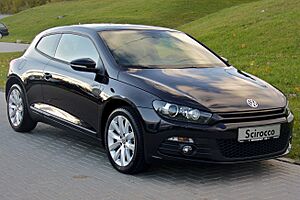
Volkswagen's sales in North America continued to grow. In 2006, sales were up 4.9% from 2005. New models and factory improvements were noticed. For example, the GTI was named a top sporty car by Consumer Reports.
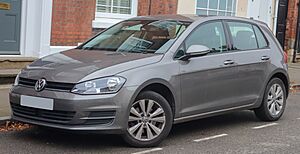
Volkswagen worked with other companies to promote BlueTec clean diesel technology. According to the US Environmental Protection Agency, four of the ten most fuel-efficient cars in the US were powered by Volkswagen diesel engines. However, strict US emissions rules forced Volkswagen to remove most diesels from their US lineup for a while. New diesel engines that met US standards returned in 2009.
Volkswagen had avoided making an SUV for a long time. But then they introduced the Touareg in partnership with Porsche. It was praised for its handling. Volkswagen also planned a compact SUV, which was named the Tiguan in 2006.
Since Volkswagen stopped selling the T4 van in the US in 2003, they needed a new van for North America. So, in 2008, Volkswagen launched the Volkswagen Routan. This was a re-badged Dodge Grand Caravan.
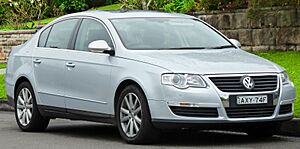
In September 2006, Volkswagen started offering the City Golf and City Jetta only in Canada. These were older Golf and Jetta models.
In May 2011, Volkswagen opened its Chattanooga Assembly plant in Chattanooga, Tennessee. This was VW's first plant in the US since the one in Pennsylvania closed. The plant makes Volkswagen cars and SUVs for North America.
The VW XL1 started limited production in 2013. It is a very lightweight and fuel-efficient two-person car.
In 2015, Volkswagen faced a big problem called the Volkswagen emissions scandal, also known as Dieselgate. The US Environmental Protection Agency found that Volkswagen had cheated on emissions tests. They had programmed diesel engines to turn on their pollution controls only during lab tests. This made the cars seem cleaner than they were. In real driving, the cars released up to 40 times more pollution. Volkswagen used this software in about 11 million cars worldwide.
In June 2016, Volkswagen agreed to a settlement of up to $14.7 billion. This was to resolve claims of cheating on tests and misleading customers. The agreement included buying back or fixing affected cars. It also involved paying customers and investing in cleaner technology. This was one of the largest consumer settlements in US history.
The Volkswagen Atlas, a large SUV, started production in late 2016. It aimed to help Volkswagen recover from losses in the US market. In September 2016, Volkswagen announced a partnership to create a new company called Cymotive. It focuses on car security.
Focus on Electric Vehicles (2017–Present)
In 2017, Volkswagen announced big plans for electric vehicles (EVs). Their goal was to launch at least 30 EV models by 2025. They wanted EVs to make up 20 to 25 percent of their yearly sales. In September, Volkswagen CEO Matthias Müller said the company aimed to have electric versions of all its car models by 2030. This would cost a lot of money. On March 6, 2017, Volkswagen showed a prototype for a fully self-driving car called Sedric.
Volkswagen returned to motorsport in 2018 with its all-electric I.D. R. At the Pikes Peak International Hill Climb, Romain Dumas set a record driving the I.D. R.
In September 2018, Volkswagen announced it would stop making the Beetle in 2019. Also in September 2018, Volkswagen invested $100 million in a company called QuantumScape. This company works on solid-state batteries.
In February 2019, Volkswagen said it would launch a new car brand in China called Jetta. It is for young buyers. Three models were announced in July 2019: a sedan and two SUVs. All three are made in China.
In September 2019, at the Frankfurt Motor Show, Volkswagen showed a new, simpler logo. They also introduced the ID.3 electric vehicle. Volkswagen said the ID.3 marked the start of a "new era" for the company.
In September 2019, Volkswagen also announced a program to turn old Beetle models into electric cars. This is done with a German company called eClassics. The electric parts are based on those from the e-up! model.
In November 2020, Volkswagen said it would invest $86 billion over the next five years. This is to develop electric and self-driving cars. They want to remain the world's largest carmaker in the green era.
In January 2021, Volkswagen announced that its sales in 2020 dropped in China, Western Europe, and North America.
In March 2021, Volkswagen said it would stop developing new internal combustion engines. However, they would keep improving existing engines to meet stricter emission rules. The company also announced it was changing the American division's name to "Voltswagen." This was later revealed to be a joke.
In March 2022, Volkswagen released the ID. Buzz electric minivan.
On May 11, 2022, Volkswagen confirmed it would bring back its Scout off-road vehicle brand. This time, it will be for EVs. Production is set to begin in 2026. This is the first time VW has created a new brand only for the US market.
In July 2022, Volkswagen started building its first "Gigafactories" in Salzgitter, Germany. This new part of the business focuses on all of Volkswagen's battery activities. This includes everything from raw materials to recycling.
In September 2022, Volkswagen introduced the ID. XTREME1 concept car. It is an off-road electric SUV.
In December 2023, VW announced that its brands in North America would use the NACS charging connector starting in 2025. This is the same system used by Tesla.
In June 2024, VW stated that it would continue to develop its internal combustion engine vehicles. This is because sales of its EV models were slowing down.
In October 2024, Scout Motors announced it would sell directly to customers and service vehicles itself. This is similar to how Tesla operates.
In December 2024, workers at Volkswagen factories in Germany announced they would go on strike. This was due to concerns about plans to close plants, lay off workers, and cut pay.
How Volkswagen Operates
Volkswagen is the main and founding member of the Volkswagen Group. This is a large international company that owns many car and truck brands. These include Audi, SEAT, Porsche, Lamborghini, Bentley, Bugatti, Scania, MAN, and Škoda. The Volkswagen Group's main office is in Volkswagen's historic home of Wolfsburg, Germany.
The Volkswagen Group is Europe's largest car maker. It has over 74,000 employees and more than 7,700 dealerships. For a long time, Volkswagen has had a market share of over 20 percent in Europe.
In 2010, Volkswagen had record sales of 6.29 million vehicles. Its global market share was 11.4%. In 2008, Volkswagen became the third-largest car maker in the world. By 2016, it was the second largest. In 2018, the company delivered a record 10.8 million vehicles. Volkswagen Group's main markets are Germany and China.
In July 2019, Volkswagen invested $2.6 billion in Argo AI. This is a company that develops self-driving vehicles.
Volkswagen Factories Around the World
Volkswagen has factories in many parts of the world. They make or assemble cars for local markets. Besides Germany, Volkswagen has factories in Mexico, the United States, Slovakia, China, India, Malaysia, Brazil, Argentina, Portugal, Spain, Poland, the Czech Republic, Bosnia and Herzegovina, Kenya, and South Africa. In 2023, the factory in Russia was sold to a Russian company.
In May 2014, Volkswagen planned to start assembling some engines in India. This was to increase how much of the car was made locally.
In January 2016, Volkswagen announced a new factory in Algeria. This factory makes cars like the Volkswagen Golf VII, Volkswagen Polo, and Volkswagen Caddy.
Since 1985, Volkswagen has also run the Volkswagen AutoMuseum in Wolfsburg. This museum shows the history of the company.
Working at Volkswagen
Volkswagen has 120,000 employees in Germany. It is one of the most organized companies for workers in the world. Volkswagen workers have very strong collective agreements. The company has a long history of working together with its employees.
In December 2011, Volkswagen agreed to a rule to help employees balance work and life. It limited company emails on work phones to working hours.
Volkswagen and Porsche
Volkswagen has always had a close relationship with Porsche. Porsche is a sports car maker founded in 1931 by Ferdinand Porsche. He was the original designer of the Volkswagen. The first Porsche car, the Porsche 64 from 1938, used many parts from the Volkswagen Beetle. The 1948 Porsche 356 also used many Volkswagen parts.
The two companies continued to work together. In 1969, they made the VW-Porsche 914. Volkswagen and Porsche worked together again in 1976 on the Porsche 924. This car used many Audi parts.
The Porsche Cayenne, introduced in 2002, shares its entire base with the Volkswagen Touareg and Audi Q7. It is built at the same Volkswagen factory in Bratislava.
In September 2005, Porsche announced it would increase its ownership in Volkswagen. This was to prevent other companies from taking over VW. By January 2009, Porsche owned more than 50% of Volkswagen AG.
On May 6, 2009, the two companies decided to join together. In August, Volkswagen's board signed an agreement to create a combined car group with Porsche. Volkswagen would take a large share in Porsche AG.
In January 2020, Volkswagen was overtaken by Tesla, Inc. as the second-most valuable car maker.
Leaving the Russian Market
After February 24, 2022, because of the situation in Ukraine, Volkswagen stopped production in Russia. This was in line with international rules. They sold all their shares and stopped exporting cars to Russia.
Volkswagen Car Models
| Best-selling Volkswagen models in 2022 | ||
|---|---|---|
| Rank | Model | Production output |
| 1 | Tiguan | 604,536 |
| 2 | Polo/Virtus/Taigo/Nivus | 448,043 |
| 3 | Passat/Magotan | 447,246 |
| 4 | Lavida | 377,284 |
| 5 | T-Roc | 322,211 |
| 6 | T-Cross/Tacqua/Taigun | 315,036 |
| 7 | Golf | 300,090 |
| 8 | Jetta/Sagitar | 292,038 |
| 9 | Atlas/Teramont | 217,771 |
| 10 | Tharu/Taos | 216,397 |
The Volkswagen brand makes many different car models. These include cars sold worldwide and special models for big markets like Europe, China, and Latin America. In 2022, the best-selling Volkswagen model globally was the Tiguan. This was followed by the B-segment cars like the Polo and Virtus, and the Passat.
Hatchback Cars
Volkswagen has been a top maker of hatchback cars. These cars are very popular in Europe. The brand offers hatchbacks in different sizes. The Golf has traditionally been the best-selling car for the brand in Europe. The smaller Polo is also very popular. Sales for hatchbacks have slowed down recently because more people are buying SUVs.
SUVs and Crossovers
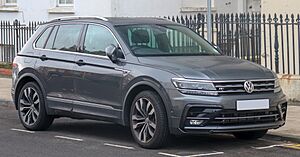
The brand introduced its first SUV, the Touareg, in 2002. It was a large luxury SUV. The brand continued to add SUVs with the Tiguan in 2007. In the mid-2010s, the company decided to make an SUV for almost every car size. They called this the "SUV offensive." Between 2017 and 2020, the brand greatly increased its SUV lineup. They went from 2 to 8 models. These include global models and models made for specific regions. Volkswagen also started making SUV models with a sloped roof, called "coupe SUVs." These are popular in China.
In 2019, one out of every four Volkswagen cars sold was an SUV. The Tiguan was the biggest seller. Volkswagen plans to offer over 30 SUV models worldwide by 2025. They expect SUVs to make up 50 percent of their global sales. Volkswagen also expects SUVs to be a big part of its future electric car range, the ID. family.
The growth of SUVs has led to some changes. For example, the Sharan mid-size van was stopped in 2020.
Cars for Specific Regions
Chinese Market Cars
Until 2022, Volkswagen was a leader in China. China is the largest car market in the world. In 2019, 3.16 million Volkswagen cars were sold there. Because China is so important, Volkswagen makes many models just for that market. Even though Volkswagen was a leader, its market share has gone down since 2020. This is because electric cars are becoming popular and Chinese brands are growing.
Sedans are very popular in China. This is because they have roomy interiors and large trunks. In 2019, the brand sold 1.6 million sedans in China. Volkswagen has several models made only for China. These include the Sagitar, Lamando, Bora, Santana, and Lavida. The Lavida was the best-selling car in China in 2019.
The popularity of SUVs also led to several SUV models made or changed for China. These include the Tharu, Tayron, and special versions of the T-Cross and T-Roc. Volkswagen also has a strong presence in the luxury car market in China. This includes the Phideon and Viloran.
On July 26, 2023, Volkswagen announced it would invest $700 million in a Chinese EV maker called XPeng. Volkswagen will work with XPeng to develop two new electric car models for the Chinese market by 2026.
Brazilian Market Cars
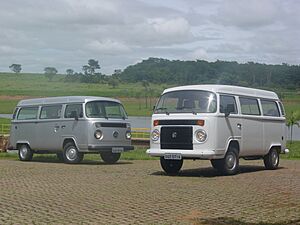
Volkswagen has a long history in Brazil. Volkswagen started building a factory in São Bernardo do Campo, near São Paulo, in 1956. This was its first factory outside Germany. One year later, the factory started making the Kombi van. Out of 81 million cars made in Brazil over sixty years, 23 million were built by Volkswagen. In 2018, Volkswagen made almost 15 percent of the cars sold in Brazil.
Because the Brazilian market is so important, Volkswagen has developed several models just for Brazil. These include the Fox, Gol, Nivus, Saveiro, Virtus, and Voyage. These cars are also often sold in other Latin American countries. The Gol, first launched in 1980, was the best-selling car in Brazil for 27 years in a row.
Environment-Friendly Cars
Cars that Run on Ethanol
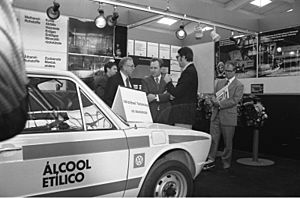
Volkswagen do Brasil made and sold cars that ran only on pure ethanol in Brazil. This stopped when newer "Flex Fuel" technology became available. After the 1973 oil crisis, the Brazilian government started promoting bioethanol as a fuel. In 1975, the National Alcohol Program was launched. After more testing, pure ethanol cars were launched in Brazil. Car engines were changed to work with ethanol. Within six years, about 75% of all Brazilian passenger cars had ethanol engines.
Sales of pure ethanol cars dropped starting in 1987. This was because petrol prices went down and sugar prices went up. By mid-1989, there was not enough ethanol fuel. This made many people stop using ethanol cars.
Flexible-Fuel Cars
The 2003 VW Gol 1.6 Total Flex was the first full flexible-fuel vehicle launched in Brazil. It could run on any mix of petrol and ethanol. In March 2003, Volkswagen do Brasil launched the Gol 1.6 Total Flex. This car could run on any mix of petrol and up to 100% ethanol fuel. After the problems with pure ethanol, people trusted ethanol-powered cars again. This helped the flex-fuel technology spread quickly. This was also helped by the many fuel stations already set up for ethanol in Brazil.
Because flex-fuel cars were so successful, by 2005, VW had sold almost 300,000 of them. By 2006, VW do Brasil stopped making petrol-only cars for the local market. All petrol-only Volkswagen models sold in Brazil are now imported. By March 2009, Volkswagen do Brasil had made two million flex-fuel cars since 2003.
Hybrid Cars
Volkswagen and Sanyo worked together to create a battery system for hybrid cars. Volkswagen plans to build small hybrid electric cars. These will include models like the Polo and Golf. The Golf is a good car for a hybrid version. The Golf 1.4 TSI was named one of the most environmentally friendly cars in 2007. Volkswagen is also working on a hybrid version of the next-generation Touareg.
VW plans for all future models to have a hybrid option. Volkswagen announced at the 2010 Geneva Motor Show the launch of the 2012 Touareg Hybrid. VW also planned to introduce diesel-electric hybrid versions of its popular models in 2012. This started with the new Jetta. In 2012, the Volkswagen Jetta Hybrid set a world record. It became the fastest hybrid car at 187 mph.
Plug-in Electric Cars
In November 2009, Volkswagen hired Karl-Thomas Neumann to lead its electric car efforts. VW's research chief said in 2010 that hydrogen fuel-cell cars are not a good option.
As of May 2016, the Volkswagen Group offers nine plug-in electric cars to customers. Three are all-electric cars: the Volkswagen e-Up!, e-Golf, and Audi R8 e-tron. Six are plug-in hybrids: the Volkswagen Golf GTE, Passat GTE, Audi A3 Sportback e-tron, Q7 e-tron quattro, Porsche Panamera S E-Hybrid, and Cayenne S E-Hybrid. Total sales of Volkswagen's electric cars were expected to reach about 103,000 by the end of 2016. The Volkswagen ID.4 was launched in the US in September 2020.
To meet strict pollution limits, the VW Group expects to sell about one million all-electric and plug-in hybrid cars worldwide by 2025. The Group plans to add 20 new electric and plug-in hybrid cars. This includes two cars to compete with Tesla, Inc.. Volkswagen announced in October 2015 that it would develop a special design for battery-electric cars, called the MEB. This system will be used for different types of electric cars. In June 2016, VW launched a program to develop 30 all-electric cars in 10 years. They aim to sell 2–3 million electric cars per year by 2025.
Flying Vehicles
In February 2021, Volkswagen said that "vertical mobility" could be the next step after self-driving cars. They announced that the company is looking into making flying vehicles in China.
Awards for Volkswagen
Volkswagen was named the fourth most important car of the 20th century in 1999. This was for its Volkswagen Type 1 "Beetle" model. It was behind only the Ford Model T, BMC Mini, and Citroën DS.
Volkswagen has won the European Car of the Year award four times:
- 1992 – Volkswagen Golf
- 2010 – Volkswagen Polo
- 2013 – Volkswagen Golf
- 2015 – Volkswagen Passat
Volkswagen has won the United States Motor Trend Car of the Year award five times:
- 1985 – Volkswagen GTI
- 1999 – Volkswagen New Beetle
- 2004 – Volkswagen Touareg
- 2012 – Volkswagen Passat
- 2015 – Volkswagen Golf line-up
Volkswagen has won the World Car of the Year award five times:
- 2009 – Volkswagen Golf
- 2010 – Volkswagen Polo
- 2012 – Volkswagen up!
- 2013 – Volkswagen Golf
- 2021 – Volkswagen ID.4
Volkswagen in Motorsport
Formula Racing
- In 1963, Formula Vee racing started in the United States. Cars were built using parts from the Beetle. It became popular as a cheap way to get into formula racing.
- In 1971, Volkswagen of America started the more powerful Formula Super Vee. Many future Formula One drivers raced in it. Volkswagen also won several races and championships in Formula Three.
- In August 2022, Volkswagen Audi Group confirmed they would enter Formula 1 starting in the 2026 season. They will use the Audi name.
World Rally Championship
- In 1981, VW started rallying with the first-generation Golf.
- Volkswagen Motorsport won the World Rally Championship four years in a row (2013 to 2016) with the Volkswagen Polo R WRC.
Dakar Rally
- In 1980, Volkswagen competed with the Iltis and finished very well.
- In 2003, they entered with a buggy called Tarek.
- Volkswagen won the 2009, 2010, and 2011 Dakar Rally in South America.
Volkswagen Motorsport Around the World
- Europe: In 1998, the company started the ADAC Volkswagen Lupo Cup. In 2004, Volkswagen Commercial Vehicles entered truck racing and won championships.
- United States: In 1976, Volkswagen entered the Trans-Am Series with the Scirocco and won their class. In 2008, Volkswagen started the Jetta TDI Cup, a race series for young drivers.
- Argentina: Many Volkswagen models have competed in TC 2000 races.
- Finland: VW won the Finnish Rally Championship in 1999, 2000, 2001, and 2002 with the Golf GTI.
- Austria: From 1967 to 1974, the Austrian distributor Porsche Salzburg entered the VW Beetle in rallies across Europe.
Literature
- Jonas Kiefer: VW Typenatlas, Serienfahrzeuge. 2. Auflage. Delius Kasing, Bielefeld 2002, ISBN: 3-7688-1271-5.
- Rudi Heppe: VW Personenwagen. Podszun, Brilon 2001, ISBN: 3-86133-209-4.
- Halwart Schrader: VW Personenwagen seit 1945, Band 1, Typenkompass. Motorbuch Verlag, Stuttgart 2001, ISBN: 3-613-02105-6.
- Halwart Schrader: VW Personenwagen seit 1945, Band 2, Typenkompass. Motorbuch Verlag, Stuttgart 2001, ISBN: 3-613-02186-2.
- Werner Oswald: Deutsche Autos, Band 2, 1920–1945. 2. Auflage. Motorbuch Verlag, Stuttgart 2005, ISBN: 3-613-02170-6.
- Werner Oswald: Deutsche Autos, Band 3, 1945–1990, Ford, Opel und Volkswagen. 1. Auflage. Motorbuch Verlag, Stuttgart 2001, ISBN: 3-613-02116-1.
Football
Volkswagen owns the Bundesliga football club Wolfsburg.
See also
 In Spanish: Volkswagen para niños
In Spanish: Volkswagen para niños
- Baja bug
- Cal Look
- List of German cars
- List of automobile manufacturers
- Punch buggy
- Standard Superior
- Steyr 50
- VDub
- Volksflugzeug
- Volksrod
- Volkswagen advertising
- VW 276 Schlepperfahrzeug


